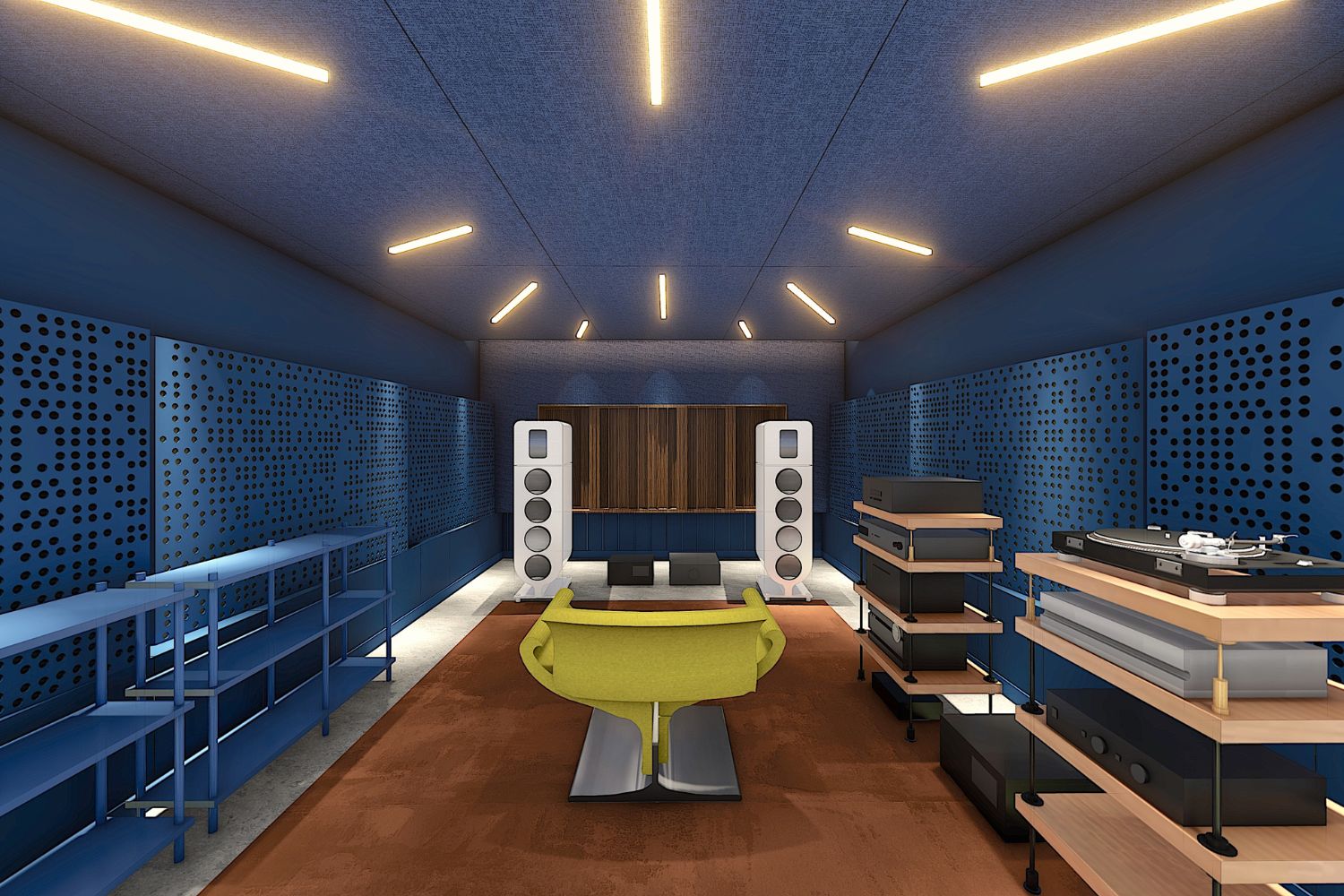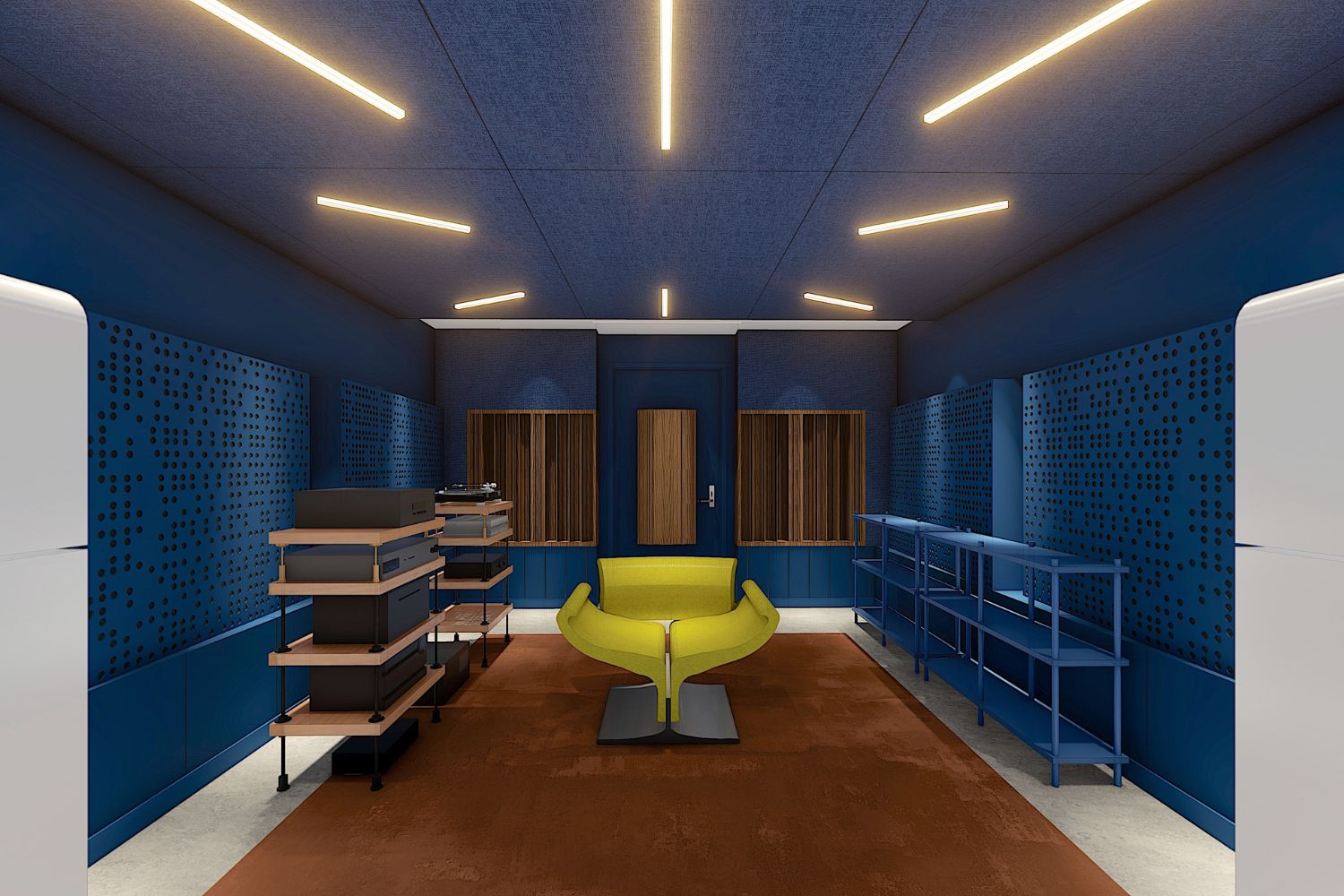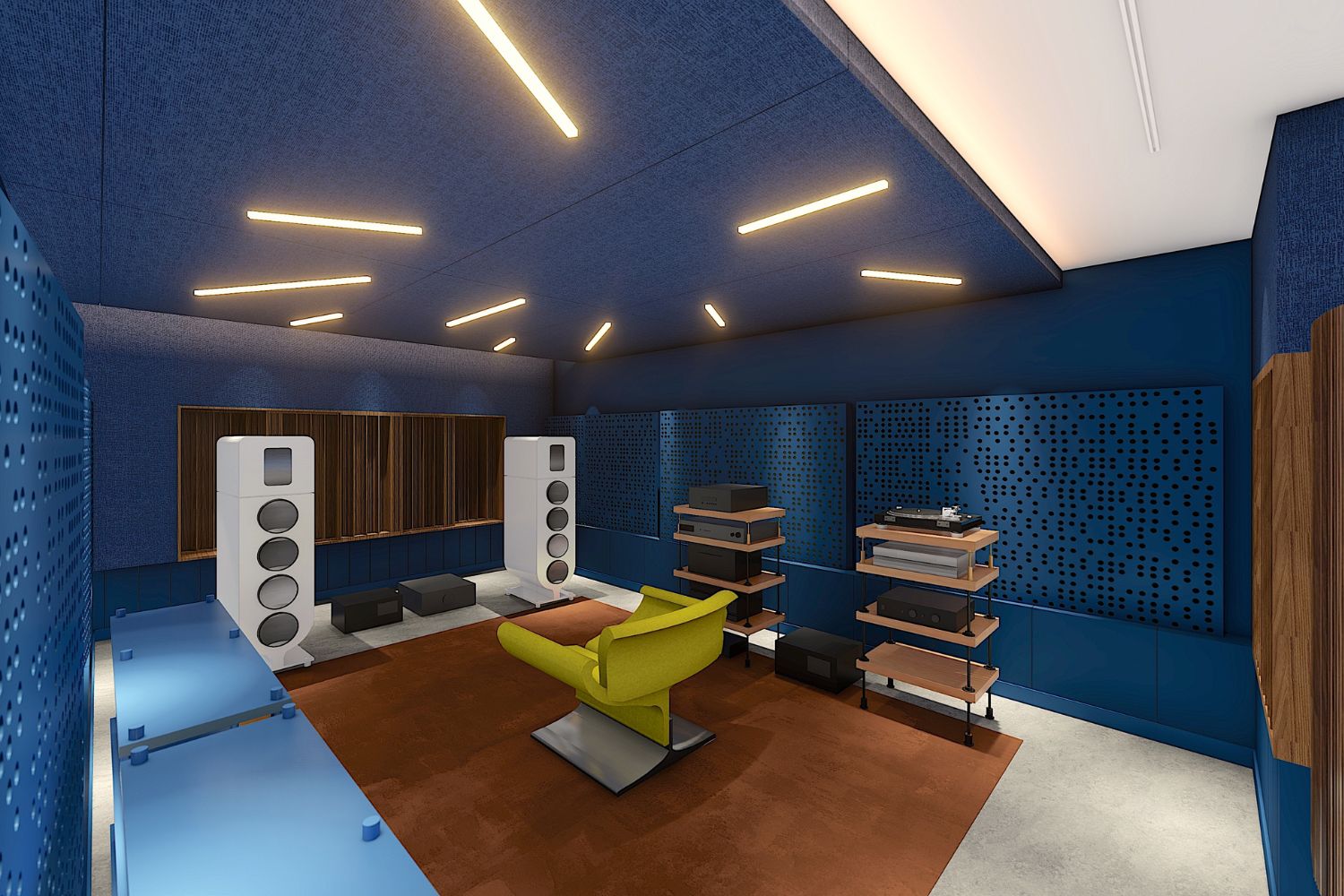Project Description
Overview
Serendipity, a key word in the WSDG Lexicon some might say is “overused“. Others however offer an alternate perspective. Case in point, the serendipitous “Twilight Zone-style” meeting of WSDG Partner, Sergio Molho and John Vande Plasse, architect and Senior Project Manager for The Switzer Group. Meeting on a vast four-full-floor construction site in a midtown Manhattan office tower, their conversation evolved from current project-related issues to off-hour pursuits. Molho soon learned that Mr. Vande Plasse is an accomplished and dedicated audiophile who designs his own equipment including handmade cables, vibration isolation platforms, and was in the process of building a small private listening room in his Colorado home. As their conversations continued, Mr. Vande Plasse described a problem he’d been experiencing at his home construction site. Initially hoping to employ local consultants and contractors to design and build his acoustically accurate “Listening Lab,” Vande Plasse soon realized that best intentions did not guarantee best results. The local talent did not grasp his acoustic requirements and recommendations, and their work failed to meet his expectations. Sergio Molho suggested that WSDG supervise the project. Utilizing NIRO™, (Non-Cuboid Iterative Room Optimizer,) an advanced acoustic measurement system, WSDG acousticians developed a sophisticated isolation program engaging innovative ceiling and wall treatments along with architectural embellishments to “fine tune” the room and acoustically isolate it from the rest of the house.
Program
The 291 SF basement “Listening Lab” with an 8’3” ceiling height moved forward swiftly. A “virtual” NIRO™, (Non-Cuboid Iterative Room Optimizer.), acoustic calibration provided precise details for the placement of front and rear wall diffusors, fabric ceiling and wall panels and slanted perforated wall resonators. Customized built-in lighting fixtures were mounted for fabric ceiling panels. The room’s primary furniture is a unique “Ribbon Chair,” designed by Pierre Paulin circa 1966. The chair was selected by Listening Lab audiophile owner John Vande Plasse who also carefully curated analog and digital playback equipment, and custom media storage units to complete his “Listening Lab” for acoustic product developments including his own “handmade cables, vibration isolation platforms and furniture.”
Design
Audio gear includes a VPI ADS Speed Controller Analog Drive System, a VPI Prime 21 Turntable, a pair of PS Audio Aspen FR30 Loudspeakers, Pass Labs X150.8 Amplifier, XP-22 Preamp and XP15 Phonostage, an Innuos Phonixnet Network Switch, Statement Server, Jay’s Audio CD Transport, DCS Bartok APEX DAC Custom equipment rack custom carpet and media storage were all provided by the owner. The WSDG install and support team included Project Manager/Acoustic Engineer, David Molho, Art Director Silvia Molho and associate Esther Roger who created several renderings for client approval. It should be noted that the local architect and construction firm were greatly impressed with the acoustic considerations devoted to this project and were heard to comment “This job has been a genuine educational experience for us.” John Vande Plasse remarked that “Real Acoustix, an acoustical materials vendor recommended and coordinated by WSDG were fantastic and well able to achieve WSDG’s design standards. About my custom equipment,” He adds, “I am most proud of the efforts to reduce vibration by employing a strategy of constrained material layers. I have experimented over the years with many different types of wood, metals, and polycarbonates. The current recipe consists of layers of varying thicknesses of P95 polycarbonate and aerospace grade aluminum. The increase in retrieval of low-level detail and soundstage depth is quite discernable on a wide range of recordings. The custom power cables reflect a tweaking of the recipe developed by Chris VenHaus of VH Audio. Not the easiest things to build by hand, but well worth the results, for getting closer to that absolute sound,” Vande Passe concludes.



